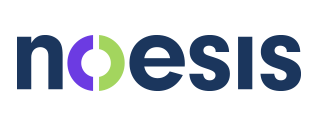Take a look around your office. What do you see?
Hopefully a productive hive of activity. But often, due to ongoing change, the pressure of bottom lines, back-to-back meetings and constant information overload, a much different picture can emerge: absenteeism, resistance to change, less idea sharing.
If this describes your experience at work, you’re not alone.
Research shows that significantly more employees are disengaged than engaged. In a recent study of 20,000 employees across 19 countries, only 16 per cent were found to be fully engaged. According to Forbes, disengagement takes many forms, from withdrawal and breaks from the routine to exhaustion, cynicism, inefficiency and naysaying.
We know that a stressed and largely disengaged workforce costs a company in lost revenue and innovation, not to mention the mental, physical and emotional toll it takes on the employees themselves.
Recent findings about how our brains work are starting to attract the attention of companies and individuals wanting to improve performance and create the optimum environment for creative thinking and focus.
Never before has the importance of workforce engagement and the ability to innovate been greater. Companies with a highly engaged workforce perform better, have lower attrition and greater customer satisfaction.
It’s All About Chemistry
When employees experience a lack of purpose, limited growth opportunities or no meaningful connection to their work, their brain chemistry can get low in dopamine, leaving them feeling discouraged, low on energy, disengaged and apathetic. Low dopamine levels are also associated with depression, low motivation and focus issues.
On the opposite end of the spectrum, if employees frequently experience information overload, competing priorities and tight deadlines, that produces a brain chemistry high in cortisol and norepinephrine, which can cause irritability and a reduced ability to collaborate, have insights or focus on strategic goals.
The good news is there are ways to keep employees engaged – or to re-engage those who have checked out. Research shows that the greatest correlation with high engagement is having trust in leadership and creating what we call a NeuroSafe™ environment. It’s about creating a climate of trust, where employees feel psychologically safe enough to fully engage each day.
Once that occurs and brain chemistry is altered, you can count on higher employee engagement and productive collaboration, which is good for everyone – and great for business.
Noesis delivers neuroleadership consulting and training to organizations handling everyday change and major transformation initiatives. We help our Fortune 500 clients scientifically improve leadership.


Recent Comments